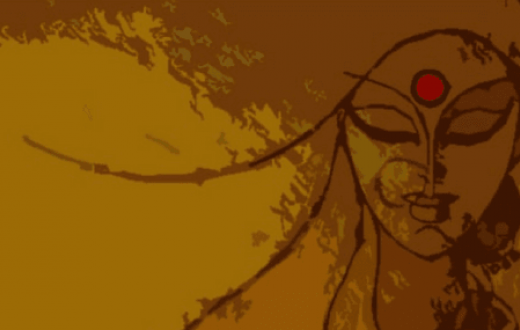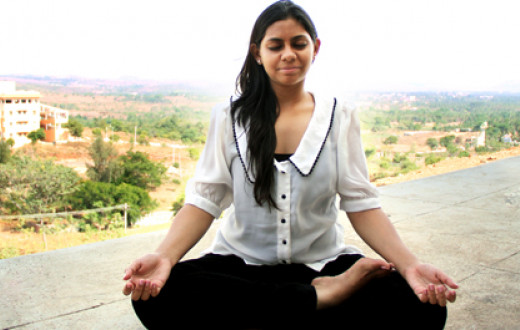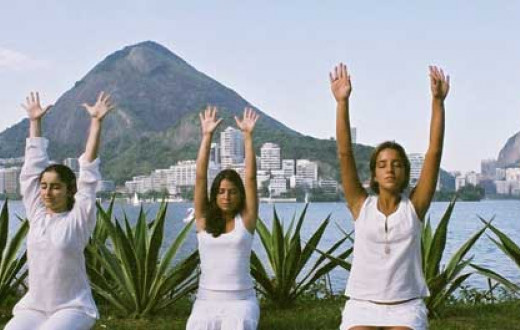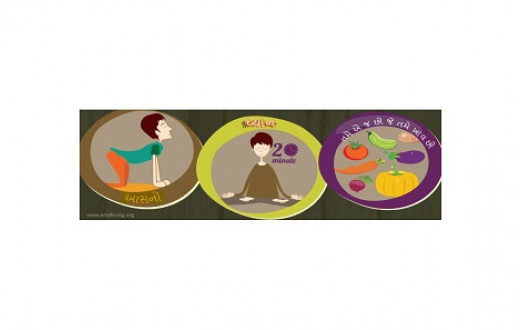Colors of Navratri
Significance of the nine Navratri colors of 2018
Navratri festivities are filled with vibrant colors that are visible in the decorations, dresses, and designs all around you. Have you ever wondered about the significance of these Navratri colors? Yes, there is a pattern and meaning behind each color that dazzles the eye.
Nine colors of Navratri 2018
The nine colors of Navratri 2018 are yellow, green, gray, orange, white, red, royal blue, pink and purple.
Every year, while the colors remain the same, the order varies depending on the day Navratri falls. These are the Navratri colors 2018 in a snapshot:
- Pratipada - Yellow
- Dwitiya - Green
- Tritiya - Grey
- Chaturthi - Orange
- Panchami - White
- Shashti - Red
- Saptami - Royal Blue
- Ashtami - Pink
- Navami - Purple
Significance of Navratri colors
Each of the nine days of Navratriare dedicated to the nine avatars of Goddess Durga - the Goddess of Shakti or power. Each of the nine colors of Navratri symbolizes a quality of the Devi.
- Yellow: The first day of Navratri is the first incarnation of Devi – Shailaputri - daughter of the mountains. She is the absolute form of Mother Nature and symbolizes strength. Yellow is the color of brightness, happiness, and cheer. It is a wonderful way to start off the nine-day celebration.
- Green: The second day of Navratri is the second incarnation of Goddess Durga – Brahmacharani – the female seeking spiritual knowledge. In this form, Goddess Durga or Parvati goes to the verdant mountains to do penance. This is where her prospective consort, Lord Shiva is. She joins him here in asceticism. Hence, the green color symbolizes growth, nature, and energy.
- Grey: The third incarnation of Devi is Chandraghanta. She wears a gray-colored half-moon on her forehead. The gray also symbolizes her mood, ever ready to fight to destroy the foes of her devotees.
- Orange: The fourth incarnation of Goddess Durga is Kushmanda. The luminosity and brightness of this Devi, with her bewitching smile, lights up the sun. She is powerful enough to live in the Sun. Hence, the color orange symbolizes her happiness and energy.
- White: The fifth incarnation of Devi is Skandamata – mother of Skanda or Kartikeya, the war-god. The Devi holding her baby in her lap is a symbol of the purity of a mother’s love. It also symbolizes the peace, purity, and prayer in devotees’ hearts when they worship her. Hence, the color white.
- Red: The sixth incarnation of Devi is Katyayani. She is a fierce form of Goddess Durga believed to be formed out of the anger of the Gods. Therefore, the color red is associated with her. Red also symbolizes action and vigor.
- Royal Blue: The seventh incarnation of Devi is Kaalratri. She is a destructive form of the Goddess and is also called Kali. Her powerful energy is embodied in the color blue.
- Pink: The eighth incarnation of Devi is Mahagauri. She is the fulfiller of all desires. The color pink symbolizes hope and freshness of perspective.
- Purple: The ninth incarnation of Devi is Siddhidatri. She is the giver of knowledge and helps you achieve your aspirations. Hence, the color purple represents ambition and power.
Aren’t the various names and forms of the Devi intriguing and fascinating? So, when you attend your celebrations this year keep these color codes in mind and sport a different outfit every day with the accompanying accessories. With knowledge of the significance of the Navratri colors, you can don the appropriate expression with the look.

The Nav Durga
Discover the nine forms of Divine energy that constitute our life force.

Dandiya, Garba and Navratri!
Discover the inimitable connection between Navratri and the dance forms of Dandiyaand Garba.

Significance of Navratri
Get to know Navratri – the festival of nine nights from a fresh perspective.

Celebrating Navratri Across India!
See how the festival of nine nights is celebrated differently in different parts of India.







































